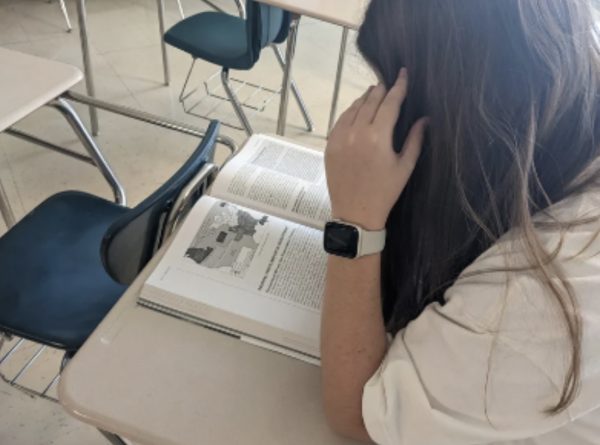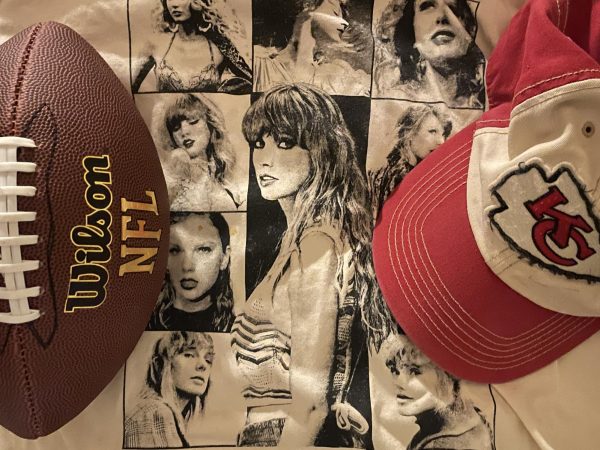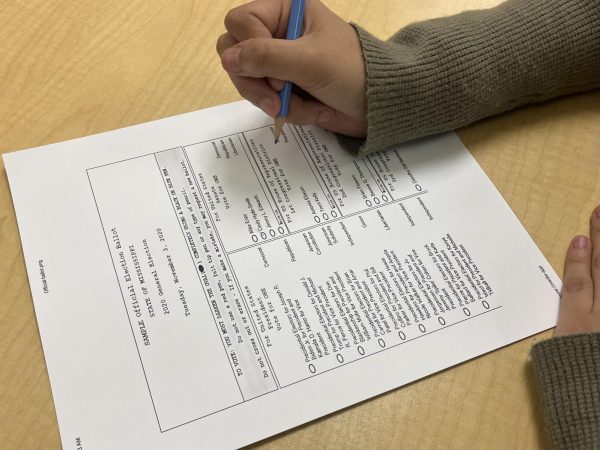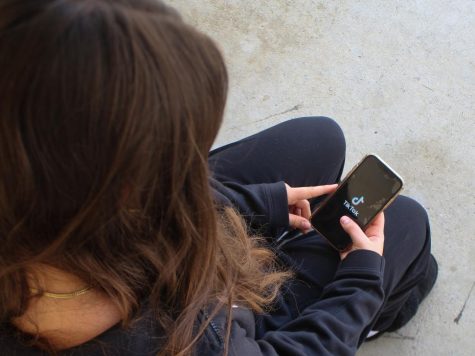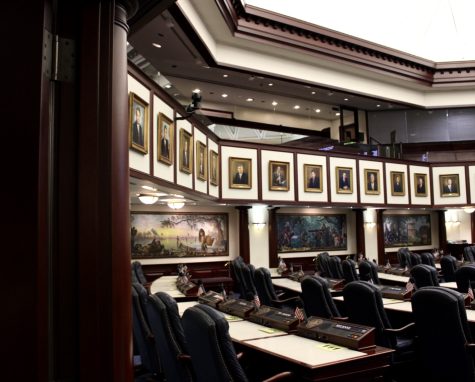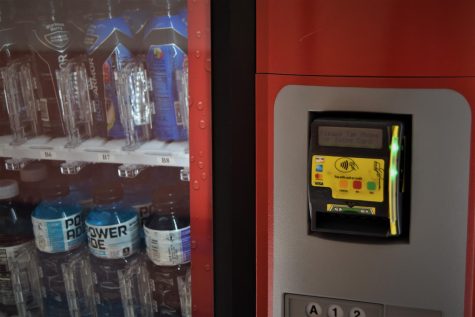OPINION: Social media affects teenage girls’ body image for the worse
Jillian Dettman, AP Art 2D student, captures this self portrait to highlight unrealistic beauty expectations.
Scrolling on social media has become a habit in our everyday routine. Constantly seeing perfected images and videos of attractive people on the internet is detrimental to our mental health. With that being said, it is not a coincidence that eating disorders and struggles with body image in teen girls have significantly accelerated with the rise of apps such as Instagram, Tiktok and Snapchat.
On social media, people naturally post themselves when they look best, as it is only a highlight of their lives. This tendency causes teens to compare themselves to others on the app, leading to a detrimental effect on their mental health. A study on emotionmatters.com reported 88% of girls compare themselves to media images.
It is absolutely devastating that girls who already have internal struggles have societal pressure to have a specific body type. Teens idolize these so-called influencers with no credibility, only internet recognition.
According to Mentalhealthfirstaid.org, the study found 52% of girls and 45% of boys have skipped meals or participated in other eating disorder behaviors due to social media. Eating disorders affect up to 30 million people around the world.
Social media posts are incredibly calculated. The perfect filter, makeup, outfit and occasional photoshop, are put into each and every post. When teens see these fabricated images, it causes teens to think looking perfect is normal.
Eliana Cohn, sophomore at Jupiter High, explained her feelings on the use of photoshop.
“When people use photoshop, it’s just not a real image of their body,” Cohn said. “[These photos] make me compare myself to others, which shouldn’t be the case.”
Trends such as “what I eat in a day” have absolutely taken over social media apps. The videos typically begin with a body check–when girls with society’s “perfect body” reveal themselves to the camera. Then, there is a follow up with the food they consume that day, insinuating that is how they got their body.
These types of videos are incredibly toxic to easily influenced teens. If the individual is posting the very little food they consume during the day, this can sway vulnerable teen girls to restrict themselves from the foods they love, to fit societies ever changing “perfect body.” However, if the body check is followed by tons of food the influencer is eating, watchers may wonder “how is it fair she looks like that and eats more than I do?”
In any context, revealing your manufactured body to the internet and claiming that it is because of a “specific diet” or workout routine, is contributing to the millions of teens worldwide suffering from an eating disorder.
“When you see all these big influencers with a big following, they’re promoting botox, unhealthy dieting…ways to make yourself prettier which is not healthy,” Cohn said
One harmless post can trigger a vulnerable teen into a cycle of hatred for their body. The fact these videos go viral enables the idea that one body type is superior. Us, teens, put these ‘perfect’ women on pedestals and contribute to the feeling of not being enough.
What we think is just an innocent scroll on social media, is actually normalizing looking flawless all the time. Think about it. When we surf the internet only seeing filtered, photoshopped, conventionally attractive people, it morphs our perception of what a normal teenager looks like. People have acne, cellulite, stretch marks, rolls, but of course, that is not publicized on the internet.
Ryleigh Beazley, sophomore, explained how having social media affects her mental health.
“You see people that are prettier than you, and you’re just like…why don’t I look like that?” Beazley said. “If I didn’t have social media I would be much more confident in myself because I would not be always comparing myself.”
It is not just females who are affected by these videos. When teen boys see an unrealistic photo or video online, they might expect the same from other females. When boys normalize these perfected bodies in women, they can body shame females for looking differently than those online.
What gives people the right to claim one body is the perfected image that we should all strive to have? The perfect figure has shifted over time, but our bodies can not change with the trends.
For example, in the 1950s, the ideal body type was a curvy waist, small hips and a tiny waist. As time went on, a slimmer body became trendy. In the 1990s, it was attractive for women to be extremely slim and tall, with visible collar bones and ankle bones. These days, women are expected to have the perfect hourglass figure, to which is even more glamourized with the rise of social media.
Our bodies are not meant to change when slim becomes a trend again. How is it fair to have our own personal anatomy go out of style? Soon the hourglass figure will be out, and who knows what’s next.
Social media expectations override teens’ intuition and confidence. People around them are deemed as less credible than the influencers they follow, telling them what to eat and how to look.
Body image issues and disordered eating affect so many young teens worldwide. The amount of young girls spending time in treatment centers and hospitals because they feel the need to change the way they look is heartbreaking. Eating disorders are one of the deadliest of the mental illnesses, it is not something to underestimate. Girls risk their lives and starve themselves due to what they see on the internet.


